How can I sell my photos and get some money??
Introduction
We have all spent a lot of money on cameras, lenses, equipment, computers and software and we probably don’t want to add it all up! We get a lot of enjoyment out of our hobby, and so, in 2008, I started thinking that it would be nice to make some money from the fine images I was starting to produce. I got involved with Stock Photography and I can help you do the same!
At this stage, you can read this starter post and learn the tips and tricks as you go along, or, you can take advantage of my new eBook – Getting Started in Stock Photography. I learned the hard way – I joined various stock sites, read forum posts with their often conflicting thoughts and gradually built up a day by day action plan to get photos online and earning money. All of that learning is in my book. I make an additional promise – write to me with your expectations of additional chapters, and I will update the book and provide free updates to all my customers – for life! Comprehensive “how-to” guide to stock photography. Please let me know what you think!
Stock Photography Definitions
Stock Photography was traditionally the preserve of experienced professional photographers who were often carefully managed by a stock agency. Each image was stored on film, and the licensing of images was very strictly controlled and expensive. Starting in the early years of the last decade, on-line agencies developed and started selling Royalty Free images – which can be used for both commercial and editorial purposes at relatively low prices and often under subscription plans where the designer can take a fixed number of images a month for their subscription. At around the same time, these on-line agencies started attracting competent amateurs and the “microstock” business was born. There are probably 40 or 50 agencies online now – not all worth bothering with – and the business has grown massively to the point where one of the main sites now has over 14 million images online. Against that competition, my images were downloaded 400 times in January to net me $235 from that site alone.
Is it easy?
The short answer is no…
After 3 years, I have around 1400 images on-line at 20 sites. Each site demands a high quality image, no noise, no dust spots, no sign of any people without model releases, no commercial products or trade marks AND of commercial interest to someone. That last point is often the most difficult as the most mundane images often sell – a picture of a handbell or an image of myself shaving in the morning…
Each image needs to be keyworded with 30 or 40 keywords and described properly. They need to be uploaded to the sites and often assigned to categories on the site. In all, a lot of work. But – the money does continue to roll in, month after month and the drive to feed the sites is a considerable force in getting out and taking more photos and trying to think of different angles on common images. There is also a great thrill when you see one of your pictures in print – I had a photo of the Jefferson Memorial in the United Airlines magazine last year.
How much can I earn?
I have around 1300 images on average – some sites more, others considerably less as their standards are either higher or they restrict the number of uploads you can make per week. iStockPhoto is the most restrictive, allowing only 20 images in any seven days. As their standards are also high, you can see how it takes a long time to build a large portfolio with iStock. Although I have been creating stock photographs for 3 years, I have really focused on getting more images online in 2010. I had 360 images at the end of 2009 on Shutterstock – today it is almost 1400. The graph here shows the number of files on-line at the end of February 2011, by site:
My performance over the last year has been one of reasonably steady growth – I took more pictures, uploaded more pictures and slowly the income rose.
As you can see, in January, I finally hit $600 in the month and in 2010, I earned almost $5000. A recent survey of 540 stock photographers on MicrostockForum for 2010 reported that the average income was $13000 with the highest reported income being $211,000! The median (the most common income across the group) was $3200 which shows that there are a lot of low earners, but some really successful photographers at the top end. Compared to the median, I did pretty well!
In later articles, I will describe the main sites, what they are looking for, and how to get started in the industry.
Setting up a Limited Liability Company
The first step is to think about taxes and how you can set the costs of setting up in business as a stock photographer against the earnings you receive. In my case, I decided to create a Limited Liability Company (LLC) that safeguards your assets from anyone who has a problem with an image that you have published. There are many useful articles on the web about how to set up an LLC – I followed one of those and wrote an earlier blog on setting up a Limited Liability Company for your earnings. Please consult with a tax adviser if you are not sure about this. I do my own personal taxes, but I have used a professional to create the tax return for the LLC and pass the losses (in the early days) back to me for inclusion in my own tax return. As long as you are steadily attempting to make money, you can set the cost of your equipment, running expenses such as web site hosting, software etc. against the income you receive. In the early days, this will almost always be an overall loss, and you can deduct that loss from your personal income on your own tax return. Although I haven’t got to this stage, I assume that you can set the cost of trips to exotic places against income when you really start to earn some serious money!
What sort of equipment do you need?
Most stock sites are looking for high quality images that are at least 4 Mpixels. That is not too high a bar with today’s cameras, but the key thing they are looking for is high quality and low noise. I have had good success with the Canon G9/G10 series of compact cameras, as long as the ISO speed is set to the lowest value, and I also reduce the image down to about 6Mpixels to hide any other sharpness or noise issues. With your first images, always go with the minimum necessary as the reduction of size can hide a lot of problems in an image. Remember that the reviewers are looking at your images at 100% size on very good monitors, and so if there is noise in the shadows, or the eyes are not really in focus, they will reject the image. It is certainly true that to upload large images (and on some sites these command a premium in pricing), you probably need a good quality SLR camera as the larger size of the sensor, and the better lenses give you a good starting point for excellent large scale images. To decide if your equipment is good enough, take a well exposed image, and process it properly for exposure and contrast. Then reduce it to around 4Mpixels (2000 x 2000 pixels). Enlarge it to 100% and carefully check the shadow areas – can you see color noise – small specks of color that are not really the same as the background hue? Look at the edges of dark objects against a bright background (like tree twigs against the sky), especially at the edges of the frame – can you see a colored halo caused by chromatic dispersion? Both of these issues can be fixed in software, but if you see a lot of noise, you are unlikely to make much progress with that camera. If you want a second opinion, post the image to my site as a comment and I’ll check it out!
Now to business – your first stock photographs
If you do decide to “have a go” please use the links in the right hand column of my site when you register, as I will get a referral if you do! There are no charges or fees to join as a contributor.
I happen to be more comfortable with landscapes and travel photographer than working with models, although I do think that the brightly lit studio model shots sell very well. Go with your comfort zone, at least at the start. I recommend that you go through your old photos (although not too old, the images need to be at least 4Mpixels at most sites.) Find the ones that are sharp, well exposed, have no people or identifiable products in them, and then review the images at full size to make sure that there are no dust marks on the sensor. If noise is present in the shadows (colored blobs of “grain”) use noise reduction and then reduce the image down to about 4 – 5 Mpixels. A word about copyright – you can’t upload pictures of people (in some cases even a back view) without a model release, you can’t have pictures of any type of product where the trademark is visible so check for shoes which often have little designs on them! You can’t include any modern art or statues, and so carefully look at your images before you decide to upload them. Finally, look at them at a small thumbnail size as well, as the buyers will often look at a whole page of images at that size and your picture needs to jump out at them even as a thumbnail. The first pictures I uploaded were travel ones like these:
You should try to find about 30 images and get them all into first class condition and sized to 6M, say. By the way, when I talk about 6M, I mean that if you multiply the dimensions of the image (eg 3000 x 2000 pixels) you get a number around 6,000,000. Smaller is OK as long as it is more than 4M. To avoid confusion, this figure does not refer to the file size when you look at the file on your computer. Save the images at the highest quality JPEG setting – usually 10 or 100%. You don’t want to have any sign of compression in the image that comes from using a lower quality setting. Also, if you can control the color profile, convert the image to sRGB before saving, as most monitors are set to show those colors correctly.
Next, you have to keyword them. Keywords are probably the most boring part of the process as they need to be comprehensive, but not misleading, and so too much copy and paste between images is not going to work. For a set from the same location, I often create a list of the keywords that apply to all images and copy them to each of the images, and then add some specific keywords to fully describe each picture. There is a good keywording site which works by searching Shutterstock for similar images and then lets you select the keywords that apply to your image. You should aim for about 30 – 40 keywords – never more than 50. Then add a title with around 10 words that succinctly describes the image and a description that more fully describes the picture. I’m told that it is a good idea to include as many of the really important keywords in the title and description as possible as that will help your picture in web searches. If you keyword in Lightroom, you should then save the metadata (keywords etc.) to the file as they need to go along with the uploaded image to the stock site. There is a “right-click” command in Lightroom to do this, otherwise it is possible that the keywords will stay in the database and not be copied into the file itself. You can also use Photoshop and some free tools for manipulating the “metadata” in files. I’ve had good success as well with ProStockMaster, which is now a free software program. Now you have 30 properly edited, keyworded and described images ready for upload!
The iStockPhoto Stock Photography Manual
Although I don’t recommend that you upload to iStockPhoto just yet, there is a very helpful on-line manual on their site that explains about the type of images, what is acceptable and what is not, when a model or property release is required etc. You can only access the manual if you have already joined, and so browse to iStockPhoto and create an account. Then look for “Contribute” and this will take you to the manual.
Which Stock Sites to join?
I’ve thought about this a lot – Shutterstock is the most exciting site with sales every day, but you have to pass a quality test to get in, and if you fail, you have to wait a month before trying again. So, I think the best plan is to start with CanStockPhoto. This is an easy site to join, there are no tests, no need to categorize images on the site (which is another pain) and, best of all, they have reasonable and very fast reviews of your images – usually within a couple of hours. So, sign up as a Contributor at CanStockPhoto, search out the Upload section, upload your images, confirm that you are the owner and have the copyright on the site and then take a break! Go go back to the site in a few hours and look at your portfolio. There is a separate section for rejected files and they will include a reason for rejection. Carefully look at your rejections and the images and try to see if you can reprocess the image to make it better. You can upload “fixed” images again, and it is worth doing this at first, but once you are in the swing of this, you can probably judge the ones that are worth fixing, and it is too much hassle to try to track which files were accepted at which sites.
OK – you have a set of images that were accepted at CanStock – what next?
Now is the time to try those images on Shutterstock – the most exciting and best earner for my portfolio. Browse to the Submitter’s section of the Shutterstock website and create an account from the landing page.
Commissions for photographers on Shutterstock start at 25 cents for each picture downloaded and after 500 dollars in earnings this bumps up to 33 cents each. At $3000 this goes to 36c. This may not seem like much, but because of the monthly subscription approach for buyers, a much larger number of pictures are downloaded each day – I currently get an average of 15 per day on a portfolio of 1300 photos, and have now moved into the highest per-download earning bracket. Occasionally, buyers will pay more – I normally have at least one at $28.00 each month. I have found that you need to upload steadily and regularly to this site, as there is an option for the buyers to display images that match their search showing the newest images first. That gives your pictures a chance of being seen quickly.
To be accepted as a member you have to submit 10 photos and have at least 7 of them approved. If you get less approved you will have to wait 30 days to try again. It took me two cycles to get approved – so this is one of the sites to be very careful with. Choose 10 images that are technically perfect (and got accepted by CanStock) and try to send a mixed batch – some objects, some travel, some architecture – just to show that you can take a wide range of good shots. If you get rejected, it is OK to reuse the ones that passed, but if you have others that are as good, try a different mix on the second attempt. Shutterstock is extremely fun to be a part of because of the high number of downloads per day and high earnings. My best selling image on Shutterstock is this one from a trip to Abu Dhabi. It has been downloaded over 200 times:

Best selling image on Shutterstock
Buyers purchase credits which can then be used to download images. Images are priced based on the size the buyer wants to download (starting around $1 and going up from there). Standard members get a 20% commission on each sale, whereas exclusive members get 25% to start and can work their way up to 40% as they sell more photos. I personally can’t see the logic for being exclusive on iStockPhoto as you are exclusive as a photographer, not at the image level, which means that you are tying your future to that one site.
To apply, you sign up at the iStockPhoto Submission page. Search for “Contribute” on the bottom right of the screen. There is then an instruction manual to read that covers a general overview of stock photography and you must pass an on-line test based on the manual. You can then upload 3 photos for review and if they approve your application you can begin uploading. If your application is denied, you can try another 3 at any time. Make sure your submission is 3 files of different types, so they can see your overall abilities. The only downside to iStockphoto is a somewhat cumbersome upload system when compared to FTP, but it is well worth it if you get a good photo that is popular as they pay more per picture than other sites. iStockPhoto also have a very complex keywording system that forces you to match your keywords against their standardized vocabulary and they are very strict about not selecting invalid keywords. As if you needed more, they restrict uploads to 20 in any 7 day period, and are very strict on any noise, defects, dust spots, artifacts (which can be any sort of flaw) as well as copyright issues. If there is the smallest noticeable person, they need a model release. There is a specific program designed to help you upload to iStockPhoto and work on the keywords on your computer, which is well worth using – it is called Deepmeta – and you should start using this once you have been accepted. Minimum payout on the site is $100. My best selling photo here is one taken at Cherry Blossom time in Washington DC:

Best selling image on iStockPhoto
This is a very professional site that earns well. Buyers also purchase credits and photos typically cost 1, 2, 3, and 4 dollars based on size. As a photo gets more sales, the price increases as well – it steps up after as few as 5 downloads. This means that you shouldn’t upload very similar photos as you could slow up the increase in download fee. Exclusive members get a 60% commission and standard members get 50%. There is no application review process so you can start uploading photos once signed up. Use this link to sign up as a contributor on Dreamstime. You have to assign categories to each image on the web site and they are harsh on “similar images”, and so you may get more rejections than you expect. One important lesson is to “go with the flow” – you may get annoyed that your best image has been rejected, but if it is accepted elsewhere, then don’t sweat it! Minimum payout on this site is $100. My best selling photo on Dreamstime is one I saw when driving home through a new development – I went home to get my camera and take this leaning sign in front of a foreclosed house:
Fotolia is an easy site to upload to – no application test and a good FTP approach. Sign up as a contributor to Fotolia here. They are quite strict on the photos they accept. It seems to be getting harder over time – I have about 900 pictures on this site after uploading 2200!! There is a rumor that the keywords have to be entered in order of importance, but I have not seen that to be an issue. It is hard (or impossible) to get keywords in anything other than alphabetic in Lightroom, and so I have ignored this rumor! There is also a section on the keywording page to select the country where the image was taken. I didn’t see this until year 3, and so I don’t know if it makes a difference! One last tip about Fotolia – when you are uploading each image on the site on the My Files page, there is an opportunity to select “Offer an extended RF license” which is not normally selected. I suggest you select this to be able to get higher earnings from certain types of licensing. This site also lets you put rejected images into a “free” section – I have never seen any logic to doing this as an image rejected on one site is often bought from another. My best selling image on Fotolia is one taken in Hawaii of a Buddha statue looking at the sunset:
BigStockPhoto is worth uploading to – nice and easy to upload to, their site suggests categories for the image, although you have to make sure they are accurate as I have had rejections for invalid categories. It is not a great earner, but it can be slow and steady. Sign up as a contributor to BigStockPhoto here. Minimum payout is $30. Some large newspapers use BigStock for images – I have had pictures in the Washington Post from this site. Minimum payout is $30.
Sign up for 123RF here. It is a low earner, but not difficult to work with. You can upload your images and then they automatically check them and accept or reject – there is no need to visit the site to add categories. They require you to submit 10 images for initial approval. Minimum payout is $50.
Most Photos
This is an oddball site – I have been there for 2 years and have had one sale! So, why am I including them here? They are very easy to upload to, no categories and a trust system for Model releases, but the main attraction is that you can upload your high resolution images, and use them as a free storage library. As the owner, you can later go along and download the images again, so it is a good secure way of maintaining a backup for your photos. I haven’t had to use this (as I maintain separate backups anyway), but it could be helpful in an emergency. The other good point – the sale I had generated about $15! Here is the Contributor link for Most Photos.
Graphic Leftovers
The last site on my list is one I joined in the fall of last year. They have a reasonably easy approach to approvals, have created a GL Collection which contains their best images, and they have pretty fair payment percentages. You can choose your own price, but the default of $6 seems to work well – for every sale, I get $3.12. The people running the site are very helpful as well. After a slow start, I am seeing 2 sales a month and hopefully that will increase over time. I stay with the site because it is easy to upload to – just use FTP and forget it – and sales are always welcome! Here is the Contributor link for Graphic Leftovers.
Last Thoughts
There are other sites out there, and sometimes a new site will pay for uploaded images. I’ll post updates on my blog if I see any of these. You can also use your photos as templates for Business Cards, which is an interesting sideline, and sell unique products based on your images and design on Zazzle. The key thing is to enjoy yourself and let your photography generate some much needed cash!

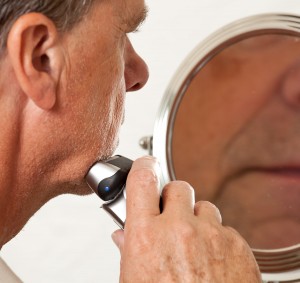
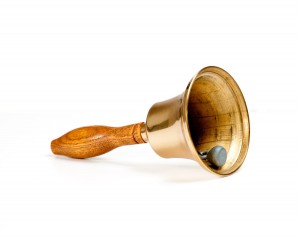
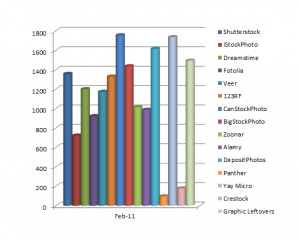
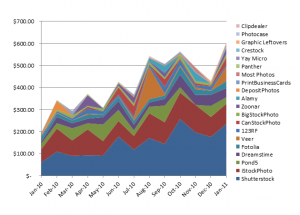



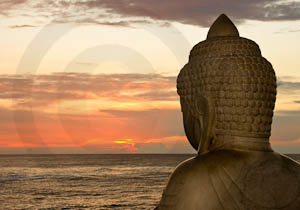






hi
I have photos that you want to sell and you have the right to sell the sites sell photos I am an Iranian and have no familiarity with the English language can not sell my pictures on this site if you want me to check my mail You send the photos to you each buy you love me
Hi
I think your question is that you are not very proficient at English and so will have difficulty creating keywords and descriptions, and so could you supply your images to someone else who then keywords and uploads them to the main stock sites. I think that may be possible for people based outside the US (which has restrictions about Iran), but you would have to agree a short contract assigning copyright to the other person, and agreeing how much would be paid if the images are sold. Many of the stock sites (not Canstock) are based outside the US and you would be able to join those. Also, the keyword site I mention does provide the main keywords in English. The other approach is to find a similar image on Shutterstock and copy/paste the English description of the picture.
Steve
Very detailed and good info about the main stock sites. Thank you for your time and efforts. I got approved with my first try at shutterstock – not really sure why I went there first place. Probably some ad I saw on the net. But I am getting hell a lot of rejections now :))) Still I don’t give up easily , and as you said , the downloads keep us going.
Do you need to get a copyright for your photo before uploading it to one of these stock photography sites? Thank you for writing this! Very informative!
You automatically have copyright on your own images by the simple act of taking them – you don’t need to register the image in order to have the copyright. The reason some people register their images with the Copyright office (I don’t) is because it gives them the possibility of claiming greater damages if their image is used without their permission in a commercial way. I always process the images to add a “Copyright reserved” statement in the metadata of the file along with the keywords etc., but that simply confirms copyright rather than being a necessary step.
Steve
Thank you Steve!
Sir,
I am not getting approval from Istockphoto,but the same photo has been accepted on fotolia,canstock,bigstock and dreamtimes.please advice me what should i do to get approval.i already attempt 2 times.
which camera you would suggest for better photograph quality?
I am planning to buy Canon T3i
Thanks
iStock is definitely a more selective agency than some of the others, although Fotolia is also pretty strict in terms of the type and quality of images that they accept. I found that if I down-sized the images a little before uploading it sometimes helped. It certainly reduced the “artifacts” rejections when they think they can see some signs of a less than clean image. The other approach is to just accept that they don’t want that image and move on to other photos – I have taken the view that if an image is rejected, then I generally don’t make any attempt to modify and re-submit. There are always other images you can upload in its place.
The subject of cameras is a good one. There is a list on the Alamy site of the cameras that they think are acceptable for stock purposes You will be glad to see that the Canon T3i is on the list! The other thing to keep in mind is that the lenses make a big difference and so as you gain more money, look to buy some good glass to replace the kit lens that the camera comes with. More expensive lenses are sharper, but more importantly, they have a lot less chromatic aberrations (the colored edge to an object) which can cause rejections at iStock and others.
Steve
Hello,
I have really nice photos of my baby taken by a photographer, where can I sell them?
Thx,
Well, the simple answer is that you can’t. The photographer who took the pictures owns the copyright of those images. Although he/she has given you prints, and may have given you a copy of the digital file, the ownership of the image remains with the photographer and you would get into trouble trying to sell the pictures yourself. You can only sell pictures that you take yourself.
Steve